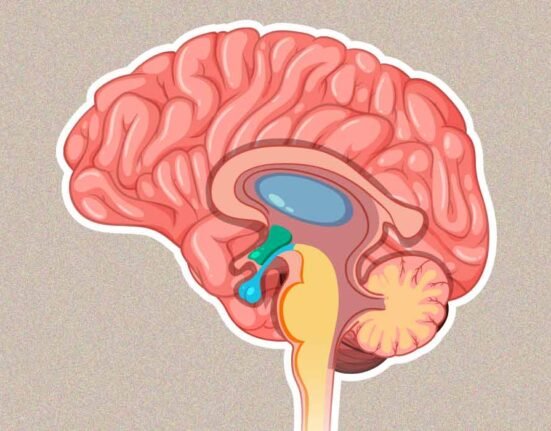The saying ‘sitting is the new smoking’ needs slight modification. Any position held for long hours is harmful to health, be it sitting or standing. Damaging effects of poor posture on mental health are not caprices. The human body is not for staying in a single posture all day long. Isn’t it becoming more common for people to walk with a hand on their lower back? Pain in the lower back, upper back, shoulders, and neck are associated with sitting in front of the screen for long hours. With respect to mental health, it increases the risk of anxiety and depression among other issues.
Sitting on the floor was native to humans until modern-day jobs and lifestyles got acquainted enough with the ‘chair culture’. Squatting and sitting cross-legged on the floor is our natural resting position. Squats engage the glutes, quadriceps, groin, and calves allowing for optimum use of inactive muscles designed to hold the body weight. However, due to a sedentary lifestyle, any such posture subjects the body to aches and pain.
While you may be exercising every day, more than 7-8 hours of sitting can cancel out the effects of exercise. A systematic review of sixteen research studies revealed that 60 minutes of moderate to intense activity attenuates but doesn’t eliminate the deteriorating effects of prolonged sitting. You may be doing light to moderate exercise 30 minutes a day to keep such problems at bay but the fact is that this is not enough. Long sitting may counter the effects of exercise. The concept of an active couch potato talks about people who exercise once a day and remain seated for the rest of the day. It is important to note that feeding the body with movement every hour is more useful than just exercising once and remaining sedentary throughout the day.

How do long sitting hours impact mental health?
The most obvious impact is that when the body is suffering from chronic pain in any body part, the repercussions on mental health are bound to happen. The decline in productivity, concentration, ability to work, sleep disturbances and concomitant feelings of hopelessness and sadness heighten the risk of mental health issues. The physical body and mental health are interconnected, problems in either manifest in the other.
Struggling with constant pain in the body and resulting limitations in what you can and cannot do makes one susceptible to mental health issues. Let us look at some evidence to back up the negative impact of a sedentary lifestyle and well-being on mental health. A research study found that sitting hours have a notable influence on depression and meta-analyses of literature further highlight that a sedentary lifestyle is associated with an increased risk of depression. Participants sitting for 8 or more hours also displayed higher depression and anxiety scores. Other research studies also found that less physical activity, high screen time, inactivity, and sedentary behaviours were linked to sadness, depressive symptoms, loneliness, and anxiety. The results from a survey of 3367 government employees in Australia showed that both men and women sitting for more than 6 hours per day had a 76 per cent increased prevalence of moderate to high psychological distress. Further, adolescents sitting for long hours were at an increased risk of developing depressive symptoms.
Occupational sitting and desk-bound duties restrict movement between work. Not taking movement breaks hampers concentration, the ability to do deep work, and produces diminishing returns after a certain point. It is no wonder why people feel mentally drained and exhausted after a 9-6 job which heightens the feeling of irritability, low moods, and risk of displaced anger. Contrary to this, movements can make one feel more active, energetic, and creative and enhance overall mood. While there may be other factors at work that affect job satisfaction. The potential of sedentary behaviours to worsen mental health should not be underrated. Similar to feeding the body with foods and snacks 3-5 times a day or maybe more, you need to feed the body with movement too. Depriving the body of movement nutrition shows up in the various aspects of health sooner or later.
Moving from exercise to movement nutrition
Our grandparents didn’t have access to modern-day facilities that ease the burden or reduce the work to be done by the body. They walked to the vegetable markets instead of ordering it from Grofers or big basket. Washed clothes that activated the muscles in the forearm, rested in squats, naturally lifted weights by getting stuff (flour, rice, etc.) from shop to home. It were okay with walking barefoot which employed the muscles in feet that are often inactive in our body. The periodic movement was a part of their everyday routine. They didn’t squeeze in an hour for gymming or yoga sessions or separately go to exercise. This is what movement is and exercising is just one component of movement.

The good part is that the problems sprouting from long sitting hours are man-made and due to an unhealthy lifestyle. Both of these elements are significant since it is possible to stop the consequences. Combination of movement with activities that boost your mental health result in the betterment of your body and mind. For example, taking a few deep breaths while walking or stretching while chanting an affirmation. The easiest way to incorporate movement is to ditch cars for short distances, walk to the grocery store or park the car far from your workplace.
Use stairs instead of elevators or escalators. This works to enhance cardiovascular endurance as well. Prolonged sitting maintains the hip flexion position for too long and shortens the hip flexors, lengthening the gluteus muscles. Thus, it is important to do stretches that increase the flexibility of hip flexors and strengthen the glutes and hamstrings. Constantly sitting also increases the pressure on the upper back, chest, neck, back muscles and spine. We don’t realise how sitting impacts those muscles that often go unnoticed. Typing on the keyboard puts the wrist and fingers in a flexed position, necessitating the practice of movements that involve wrist and finger extensions.
Our body is interconnected, that is problems in one area can travel down or manifest in another. While you may be experiencing low back pain, a possible reason could be the position of your head and neck. Likewise, you may experience pain in your arm and the culprit could be muscles in your upper back. Considering these factors, we have to understand that walking is not enough. It is important to incorporate 5-7 minutes of stretching 3-4 times a day to stretch out overused and inactive muscle groups.
To conclude, merely exercising for half an hour is like having one healthy meal a day and munching on junk the entire day. The reasons explained are convincing enough to get moving and care for your body. Body and mind are vehicles that stay with you till the end of your last breath. Compromising on their care will crash down like an avalanche in the long run, depriving us of sound health. Incorporating movement is not demanding, it is just a matter of putting it into practice till it becomes a habit.













Leave feedback about this